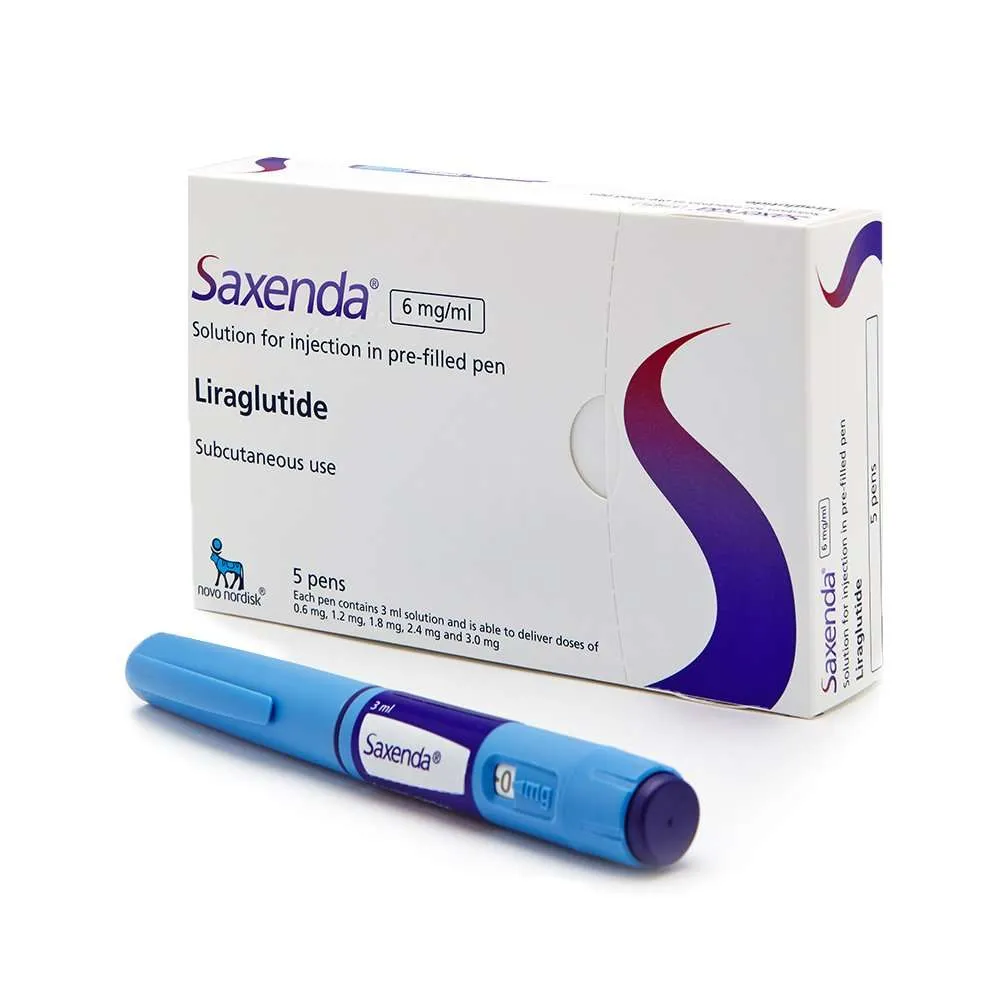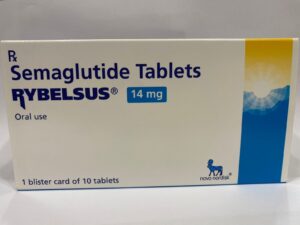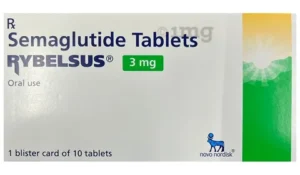Saxenda
Where Is The Cheapest Place To Buy Saxenda
Where Is The Cheapest Place To Buy Saxenda. Novo Nordisk manufactures Saxenda (liraglutide), a brand-name prescription medication. Although liraglutide is also used to treat Type 2 diabetes under a different trade name, Saxenda is used to help some people lose weight. Patients who use Saxenda generally include a doctor-recommended exercise and nutrition regimen into their daily routine in order to reduce weight. The usual Saxenda price ranges from $1,808.99 for a supply of 5, 3ML of 18MG/3ML Solution Pen-injector to $1,188.00 for 5, 3ml of 18mg/3ml Pen. When you fill your prescription at a local participating pharmacy, you may use our free Saxenda savings card to possibly save money.

Showing the single result
-
Buy Saxenda Online UK, Saxenda, Where Is The Cheapest Place To Buy Saxenda, Where Is The Cheapest Place To Buy Saxenda In Canada
$49.99 – $1,500.00 Select options This product has multiple variants. The options may be chosen on the product page
Showing the single result
Buy Saxenda Online
Buy Saxenda Online (liraglutide) is used to assist some adults and children lose weight when combined with diet and exercise. It comes in the form of a pen that is injected beneath the skin once daily. After your physician has trained you on how to prepare and use Saxenda (liraglutide), you may administer injections to yourself or your kid at home. Nausea, vomiting, and diarrhea are some of the most prevalent adverse effects of this medicine.
What is Saxenda (liraglutide)?
Drug Facts
Where To Buy Needles For Saxenda Pen | How Saxenda (liraglutide) works
Where To Buy Needles For Saxenda Pen is a glucagon-like peptide-1 (GLP-1) receptor agonist. It is related to GLP-1, a hormone produced by your body to regulate your appetite. Saxenda (liraglutide) acts in your body by mimicking GLP-1. It aids in weight reduction by slowing down your intestines, making you feel less hungry.
What is Saxenda (liraglutide) used for?
Help with weight loss along with lower calorie diet and exercise in:
-
Adults with body mass index (BMI) greater than 30 kg/m^2^, or greater than 27 kg/m^2^ with a weight-related health problem (e.g., high blood pressure, type 2 diabetes, or high cholesterol)
-
Children 12 years of age and older who weigh over 132 lbs and have a high BMI
What are the side effects of Saxenda (liraglutide)?
Serious Side Effects
- Inflammation of the pancreas (pancreatitis): stomach or back pain that won’t go away, vomiting
- Serious allergic reactions: trouble breathing, hives, itching, swelling of your face, lips, tongue, or throat
- Low blood sugar: shaking, sweating, dizziness, confusion, anxiety blurred vision, feeling very hungry
- Kidney problems: changes in urination, blood in your urine, swollen feet or ankles, smaller appetite, muscle cramping
Common Side Effects
Adults
- Nausea (39%)
- Diarrhea (21%)
- Constipation (19%)
- Vomiting (16%)
- Redness, itching, and other injection site reactions (14%)
- Headache (14%)
- Low blood sugar levels people with type 2 diabetes (13%)
- Indigestion (10%)
- Tiredness (8%)
- Dizziness (7%)
Children 12 years of age and older
- Nausea (42%)
- Vomiting (34%)
- Diarrhea (22%)
- Low blood sugar levels (15%)
- Dizziness (10%)
- Fever (8%)
Other Side Effects
- Stomach pain or discomfort
- Heartburn
- Burping
- Urinary tract infection
- Passing gas
- Trouble sleeping
- Dry mouth
- Feeling weak
- Anxiety
- Cough
- Leg or arm pain
- Rash
- Depression
The following side effects have also been reported
Along with its needed effects, a medicine may cause some unwanted effects. Although not all of these side effects may occur, if they do occur they may need medical attention.
Check with your doctor immediately if any of the following side effects occur:
- More common
- Bladder pain
- Bloody or cloudy urine
- Chills
- Cough
- Diarrhea
- Difficult, burning, or painful urination
- Fever
- Frequent urge to urinate
- General feeling of discomfort or illness
- Headache
- Hoarseness
- Joint pain
- Loss of appetite
- Lower back or side pain
- Muscle aches and pains
- Nausea
- Runny nose
- Shivering
- Sore throat
- Sweating
- Trouble sleeping
- Unusual tiredness or weakness
- Vomiting
- Less common
- Blurred vision
- Dizziness
- Nervousness
- Pounding in the ears
- Slow or fast heartbeat
- Rare
- Anxiety
- Cold sweats
- Confusion
- Cool, pale skin
- Depression
- Hives or welts, itching, or skin rash
- ncreased hunger
Buy Saxenda Online Cheap
Large, hive-like swelling on the face, eyelids, lips, tongue, throat, hands, legs, feet, or genitals
- Loss of consciousness
- Nightmares
- Redness of the skin
- Seizures
- Shakiness
- Slurred speech
- Incidence not known
- Agitation
- Clay-colored stools
- Confusion
- Dark urine
- Decreased awareness or responsiveness
- Decreased urine output
- Depression
- Difficulty with swallowing
- Hostility
- Irritability
- Muscle twitching
- Puffiness or swelling of the eyelids or around the eyes, face, lips, or tongue
- Rapid weight gain
- Severe sleepiness
- Swelling of the face, ankles, or hands
- Tightness in the chest
- Unpleasant breath odor
- Vomiting of blood
- Yellow eyes or skin
Saxenda Buy Online
Some adverse effects may develop that might not need medical treatment. These adverse effects may subside as your body responds to the medication. Your doctor may also be able to advise you on how to avoid or mitigate some of these adverse effects. Consult your doctor if any of the following side effects persist or become bothersome, or if you have any concerns about them:
- More common
- Back pain
- Belching
- Body aches or pain
- Constipation
- Decreased appetite
- Heartburn
- Indigestion
- Loss of voice
- Pain or tenderness around the eyes and cheekbones
- Sneezing
- Stomach cramps, discomfort, or pain
- Stuffy nose
- Swollen mouth and tongue
- Unpleasant taste
- Urge to have bowel movement
- Weight loss
Buy Saxenda Online USA
Bleeding, blistering, burning, coldness, discoloration of the skin, feeling of pressure, hives, infection, inflammation, itching, lumps, numbness, pain, rash, redness, scarring, soreness, stinging, swelling, tenderness, tingling, ulceration, or warmth at the injection site
Other side effects not listed may also occur in some patients. If you notice any other effects, check with your healthcare professional.
Call your doctor for medical advice about side effects. You may report side effects to the FDA at 1-800-FDA-1088.
Pharmacist tips for Saxenda Buy (liraglutide)

- Saxenda (liraglutide) alone will not keep the weight off. Continue to adhere to your provider’s food and exercise regimen.
- Saxenda (liraglutide) may slow down muscular movements in your gut, allowing food to remain in your stomach for a longer period of time. This might result in gastrointestinal issues such as diarrhea, nausea, and vomiting. Make sure to consume plenty of drinks to keep hydrated. Inform your physician if your symptoms are severe so that they can determine if you need further medical treatment or a dosage adjustment for Saxenda (liraglutide).
- Inform your doctor if you notice depressive symptoms or a deterioration of your mood while taking Saxenda (liraglutide). In severe situations of depression, your doctor may advise you to discontinue use of this drug.
- Some drugs may interact with Saxenda (liraglutide). This is due to the fact that it slows your digestion, which might influence how other drugs are absorbed. For example, Saxenda (liraglutide) may impair the effectiveness of digoxin (Lanoxin), increasing your risk of cardiac issues. Before starting Saxenda (liraglutide), tell your physician or pharmacist about any drugs you’re taking, including over-the-counter treatments and vitamins. If you have any concerns about this medication’s interactions, see your doctor or pharmacist.
Where To Buy Saxenda Online
Tips on using Saxenda (liraglutide)
- Do not administer Saxenda Coupon (liraglutide) injections to yourself or your kid unless you understand how to prepare and inject a dosage. Your physician or pharmacist will demonstrate how to administer your first injection.
- Before injecting Saxenda Coupon (liraglutide), clean the injection site with an alcohol swab and allow it to dry completely. When you push and hold the dosage button on a fresh pen, ensure sure a drop appears at the needle tip. This ensures that the drug is not obstructed.
- Once you’ve decided on your Saxenda Coupons (liraglutide) dosage, inject the needle into your skin while keeping the dose counter visible. Hold the dosage button down until the dose counter reads 0 and you hear or feel a click. After the dosage counter reads 0, keep the needle in your skin and gently count to 6. After counting to six, remove the needle from your skin, remove the needle from the pen, and immediately dispose of it in a sharps container.
- You may keep Saxenda Coupons (liraglutide) in the refrigerator when you first get it from the pharmacy. After you begin taking this medicine, you may keep it at room temperature or in the refrigerator for up to 30 days before discarding it.
- Keep Coupon For Saxenda (liraglutide) away from excessive heat or sunshine, since these conditions might cause the drug to be ineffective (not function). If the drug is foggy or contains solid chunks (particles), do not use it.
- Use only sterilized syringes or needles from your pharmacist. Needles and syringes should not be shared or reused. This puts you at danger of acquiring or transferring illnesses. After each usage, dispose of your needles and syringes in a sharps disposal receptacle. If you need to dispose of sharps, see the FDA website for further information.
Frequently asked questions about Saxenda (liraglutide)
How well does Saxenda (liraglutide) work for weight loss?
Where can I inject Saxenda (liraglutide)?
Saxenda $25 Coupon(liraglutide) injections may be given beneath the skin on the abdomen and thighs. Avoid the region two inches inside the abdominal button. You may also inject beneath the skin on the underside of the upper arms if you’re administering the injection to someone else. In general, you should change the injection site often to avoid skin discomfort.
Will Saxenda (liraglutide) cause nausea? | Saxenda $25 Coupon
Get Saxenda Online
Can I use Saxenda (liraglutide) if I’m pregnant?
Can I use insulin if I’m taking Saxenda (liraglutide)?
Where Can I Get Saxenda Near Me
What’s the difference between Saxenda (liraglutide) and Victoza (liraglutide)?
How do I know if my insurance covers Saxenda?
Contact your insurance plan’s provider to determine your cost of Saxenda with insurance. You can usually find the number to contact your insurance plan on the back of your card. You can also review your insurance plan’s drug list or formulary to determine if Saxenda is covered. All plans have a formulary that lists the available covered medications according to price tier.
How much does Saxenda cost without insurance?
Without insurance, the retail price of Saxenda is $1,808.99 for 5, 3ML of 18MG/3ML Solution Pen-injector. It might be tough to buy this prescription medicine if you are uninsured. By bringing one of our Saxenda coupons to your local pharmacy, you may be able to obtain a discount on your next prescription. Without insurance, you might spend $1,188.00 every 5, 3ml of 18mg/3ml Pen for Saxenda and save up to 80% on other prescription medications.
What is the cost of Saxenda with insurance?
The cost of Saxenda with insurance varies depending on the healthcare plan, dose, and drugstore. Before you pay for your Saxenda prescription, ask the chemist to compare your insurance cost to your SingleCare discount card cost. Our lowest price for Saxenda, $1,188.00 for 5, 3ml of 18mg/3ml Pen, may be less expensive than your out-of-pocket payments with insurance.
Is Saxenda covered by Medicare, and how much does it cost?
Saxenda, like many other weight-loss medications, is not commonly covered by Medicare or other insurance plans. Fortunately, you may lower your copay for Saxenda by using a prescription discount card, such as a SingleCare card.
How to Save Money on Saxenda
Saxenda Reviews For Weight Loss | Saxenda For Weight Loss Reviews
SingleCare’s free Saxenda coupon is a great way to save money. All patients are eligible to utilise a SingleCare savings card to get up to 80% off each refill. Simply search for your prescription on our website or app, compare savings at pharmacies near you, then fill your prescription with your SingleCare prescription discount card or Saxenda coupon.
Is Saxenda available as a generic?
Novo Nordisk owns the brand name Saxenda. There is presently no generic substitute on the market in the United States. While waiting for the FDA to approve a less expensive version of Saxenda, you may use our Saxenda coupons at a partnering drugstore near you.
What exactly is Saxenda?
Saxenda’s active component is liraglutide. It belongs to a class of medications known as glucagon-like peptide-1 (GLP-1) agonists, and it functions similarly to human GLP-1, which is naturally generated by the body. By lowering hunger and boosting feelings of fullness, the GLP-1 hormone aids in the regulation of food intake and appetite.
Liraglutide is administered as Victoza to treat Type 2 diabetes; however, greater dosages are utilised to control weight reduction in obese patients. People who are overweight and have at least one weight-related medical issue, such as high blood pressure, diabetes, or high cholesterol, may also be given Saxenda.
Saxenda is available as an injection that is given beneath the skin (subcutaneously). Saxenda is typically administered once daily.
What Saxenda dosages are available?
One pre-filled single-use Saxenda pen contains 3 mL of injectable fluid containing 6 mg/mL. A daily dosage of 0.6 mg, 1.2 mg, 1.8 mg, 2.4 mg, or 3 mg may be prescribed by your doctor. Saxenda dosage is typically begun at 0.6 mg once day and subsequently raised week by week to a target dose of 3 mg once daily.
Your healthcare practitioner may determine the optimal dose for you based on criteria such as your BMI, medical history, and a current list of medicines you are taking (including over-the-counter medications).
What should I do with Saxenda?
Saxenda is typically injected into the thigh, belly, or upper arm once day, regardless of meal time. To prevent skin irritation, alternate between these injection locations. If you have any questions about taking Saxenda, see the drug guide. You may also get advice from your healthcare professional on the best manner to deliver the injection.
What are the side effects of Saxenda?
The most common side effects of Saxenda include:
- Upset stomach
- Abdominal pain
- Constipation
- Diarrhea
- Low blood sugar (hypoglycemia)
- Nausea
- Vomiting
- Headache
- Dizziness
- Fatigue
- Changes in certain enzyme levels in the blood
- Injection site reactions, such as redness, irritation, or swelling around the site of injection
Saxenda Weight Loss Reviews
The most serious side effects of Saxenda include:
- Inflammation of the pancreas (pancreatitis)
- Kidney problems
- Gallbladder problems
- Severe hypoglycemia
- Increased heart rate
- Depression or suicidal thoughts
- Thyroid tumors
- Serious allergic reactions
Before using Saxenda, tell your doctor if you have a personal or family history of thyroid cancer. Tell your doctor right away if you have hoarseness, difficulty swallowing, swelling in your neck, or shortness of breath, since these might be indications of thyroid cancer.
If you are pregnant or nursing, see your doctor before using Saxenda. Saxenda should not be taken by pregnant women. It is uncertain if Saxenda is excreted in breast milk.
Seek medical guidance on how to take Saxenda depending on your general health, medical history, and response to therapy.
Who should not use Saxenda?
Certain people are not good candidates for treatment with Saxenda. These include:
- People with a personal or family history of thyroid cancer or multiple endocrine neoplasia syndrome type 2.
- People with an allergy to any ingredients in Saxenda, including liraglutide
- Women who are pregnant
Saxenda may cause adverse effects in people with these characteristics. Saxenda should only be taken if the benefits outweigh the risks of potential harm.
How much weight can you lose on Saxenda?
According to a manufacturer-sponsored research, 85% of almost 4,000 participants lost at least some weight while using Saxenda for 56 weeks. Three of every five patients dropped an average of 12 pounds, while one in every three lost an average of 23 pounds. Approximately 6% of patients dropped 47 pounds on average. Saxenda should be taken in conjunction with a low-calorie diet and moderate physical exercise for the greatest outcomes.
How it works: Your body naturally generates glucagon-like peptide-1 (GLP-1), a hormone that regulates hunger. Saxenda, as a GLP-1 receptor agonist, stimulates the GLP-1 receptor to increase GLP-1 effects. In other words, Saxenda aids in weight loss by imitating GLP-1 and reducing hunger.
What is the difference between Wegovy and Saxenda in terms of weight loss?
Wegovy (semaglutide) and Saxenda (liraglutide) are GLP-1 agonists that regulate appetite in the same manner. Both drugs are authorised by the FDA for weight reduction. Wegovy, on the other hand, is often injected once per week, whilst Saxenda is typically injected once per day. Both medicines are successful, however the quantity of weight lost with each varies.
What are the risks and warnings for Saxenda (liraglutide)?
Saxenda (liraglutide) may have major side effects. This danger may be considerably greater for specific populations. If you are concerned, speak with your doctor or chemist about alternate possibilities.
Possible risk of thyroid cancer
-
Risk factors: History of MTC | History of MEN 2
Saxenda (liraglutide) has been proven in animal tests to increase the risk of thyroid cancer. Although it is unknown if this medicine has the same risk in people, avoid taking Saxenda (liraglutide) if you or a family member has a history of thyroid cancer, especially medullary thyroid carcinoma (MTC) or multiple endocrine neoplasia syndrome type 2 (MEN 2).
If required, your physician may request blood testing or an ultrasound to look for indications of thyroid cancer. If you are concerned about your risk of thyroid cancer, speak with their physician. Notify your provider straight away if you develop signs of thyroid cancer, such as a lump in your neck, difficulty swallowing, a persistent hoarse voice, or difficulty breathing.
Inflamed pancreas
-
Risk factor: History of pancreatitis
People using Saxenda (liraglutide) experienced pancreatitis (sudden inflammation of the pancreas). This occurred 2 to 3 months after discontinuing Saxenda (liraglutide). Upper stomach discomfort, fever, nausea, and vomiting are all classic signs of a swollen pancreas. Contact your physician as soon as you notice any of these symptoms. You may need to discontinue this drug.
Gallbladder problems
-
Risk factor: Losing weight very quickly
Saxenda (liraglutide) users may develop gallstones or an irritated gallbladder in rare situations. When this occurs, you may need to have surgery to remove the gallbladder. If you’ve recently lost a lot of weight, you’re more likely to experience gallbladder issues. If you have nausea, vomiting, fever, or severe upper belly and back discomfort while taking this drug, contact your doctor straight once.
Low blood sugar
-
Risk factor: Also taking insulin or glipizide
Taking Saxenda (liraglutide) alone or in combination with other diabetic drugs such as insulin or glipizide might result in low blood sugar. If you are using diabetic medicines, your physician may reduce your dosage to minimise low blood sugar symptoms.
A dangerously low blood sugar level may be fatal. Feeling jittery, agitated or frightened, quick pulse, perspiration or body shivers, bewilderment, feeling tired, weakness or poor energy, and extreme hunger are all signs of low blood sugar.
Make sure you understand how to boost your blood sugar level if it falls too low. You should have glucose tablets or other fast-acting sweets with you to address low blood sugar.
Fast heart rate
Saxenda (liraglutide) users may sometimes notice a quicker heart rate. This may occur even when you are sleeping. As a consequence, your provider will periodically monitor your heart rate throughout therapy with this drug to ensure that it is safe for you. Notify your physician straight away if you feel chest palpitations or a fast heartbeat. In rare situations, you may need to discontinue this medicine to reduce your heart rate.
Kidney problems
-
Risk factors: Dehydration (e.g., nausea, vomiting, diarrhea) | History of kidney problems | Taking other medications that can cause kidney problems
People on Saxenda (liraglutide) or other comparable drugs have suffered major renal issues, which may be fatal. These issues have occurred in patients who had no prior history of renal disease.
If you have disorders that cause you to lose a lot of bodily fluid, such as nausea, vomiting, or diarrhoea, your risk is increased. If you have renal difficulties, your doctor may advise you to discontinue Saxenda (liraglutide).
If you’re urinating less than normal while taking Saxenda (liraglutide), notify your doctor immediately away. This might be a sign of renal troubles.
Serious allergic reactions
-
Risk factor: History of allergy to GLP-1 agonists
Saxenda (liraglutide) may sometimes produce severe allergic responses such as redness, swelling, difficulty breathing, disorientation, or wheezing. If you have a history of allergy to other GLP-1 agonists, such as Victoza (liraglutide) or Ozempic (semaglutide), the risk is increased. Make sure your physician is aware of your medical history before starting Saxenda (liraglutide). If you have an allergic response to Saxenda (liraglutide), cease taking it immediately and seek medical attention.
Possible risk for self-harm
Though the relationship to Saxenda (liraglutide) is unclear, a few persons who took it in clinical studies had suicidal thoughts. If you’re taking this drug, notify your doctor if you suffer depression, changes in your mood or behaviour, or suicidal thoughts.
Saxenda (liraglutide) dosage forms
Carton
Typical dosing for Saxenda (liraglutide)
Adults and children: Saxenda (liraglutide) is usually started with 0.6 mg injected under the skin once day. Your physician will gradually increase your dosage until you achieve a maintenance level of 3 mg daily.
-
Week 1: Inject 0.6 mg under the skin once daily.
-
Week 2: Inject 1.2 mg under the skin once daily.
-
Week 3: Inject 1.8 mg under the skin once daily.
-
Week 4: Inject 2.4 mg under the skin once daily.
-
Week 5 and after: Inject 3 mg under the skin once daily.
Interactions between Saxenda (liraglutide) and other drugs
Combining this medication with any of the following medications is normally not advised, but may be necessary in certain instances. If both medications are given simultaneously, your doctor may adjust the dosage or frequency with which you take one or both of them.
- Balofloxacin
- Besifloxacin
- Chloroquine
- Ciprofloxacin
- Enoxacin
- Fleroxacin
- Flumequine
- Gatifloxacin
- Gemifloxacin
- Hydroxychloroquine
- Insulin
- Insulin Aspart, Recombinant
- Insulin Bovine
- Insulin Degludec
- Insulin Detemir
- Insulin Glargine, Recombinant
- Insulin Glulisine
- Insulin Lispro, Recombinant
- Lanreotide
- Levofloxacin
- Lomefloxacin
- Moxifloxacin
- Nadifloxacin
- Norfloxacin
- Octreotide
- Ofloxacin
- Pasireotide
- Pazufloxacin
- Pefloxacin
- Prulifloxacin
- Rufloxacin
- Sparfloxacin
- Thioctic Acid
- Tosufloxacin
combining this medicine in conjunction with any of the following medications may raise your risk of certain adverse effects, but combining both treatments may be the best option for you. If both medications are given simultaneously, your doctor may adjust the dosage or frequency with which you take one or both of them.
- Acebutolol
- Atenolol
- Betaxolol
- Bisoprolol
- Carteolol
- Carvedilol
- Celiprolol
- Esmolol
- Labetalol
- Levobunolol
- Metipranolol
- Metoprolol
- Nadolol
- Nebivolol
- Oxprenolol
- Penbutolol
- Pindolol
- Practolol
- Propranolol
- Sotalol
- Timolol





